Are you an animal enthusiast like me, always on the lookout for comprehensive lists that cover the incredible diversity of creatures that inhabit our planet?
Exploring the vast kingdom of wildlife, from the Amazon rainforest to the Arctic tundra, can be an exhilarating journey. However, finding a concise and complete Animals A-Z List can sometimes feel like searching for a needle in a haystack.
I’ve been there, navigating through scattered information, hoping for a one-stop resource to discover and learn about the myriad species that share our world.
Did you know that there are over 8.7 million species of animals on Earth, ranging from the majestic Siberian Tiger to the tiny yet resilient lemurs of Madagascar? The sheer magnitude of our planet’s biodiversity can be awe-inspiring and overwhelming, especially when compiling a comprehensive list of these incredible beings.
I’m here to guide you through this zoological maze, so don’t be scared! With this curated list, you’ll discover the rich tapestry of the animal kingdom, including habitats, classifications, and fascinating characteristics of each animal.
What Makes These Animals Unique?
Animals possess unique adaptations that aid survival. From aardvarks to zebras, each species showcases distinct traits.
Animals stand out due to their exceptional adaptations, allowing them to thrive in diverse environments. Take the aardvark, for instance, known for its elongated pig-like snout, ideal for sniffing out insects in the dark African night.
Meanwhile, zebras flaunt their striking black-and-white stripes, believed to help confuse predators or regulate body temperature.
Various species boast specialized features. Consider the blue whale, Earth’s largest mammal, relying on its colossal size and baleen plates to filter-feed on tons of krill. Emperor penguins endure harsh Antarctic winters by huddling in tightly-knit groups, conserving warmth in the freezing cold.
Whether it’s the chameleon’s remarkable ability to change color for camouflage, the wolf’s social pack behavior, or the spider’s silk-spinning skills, each animal showcases unique traits honed by evolution, enabling survival in their respective habitats.
These remarkable adaptations define their existence, making them marvels of nature’s ingenuity.
List of Animals from A to Z
Animals with the letter A
Aardvark:
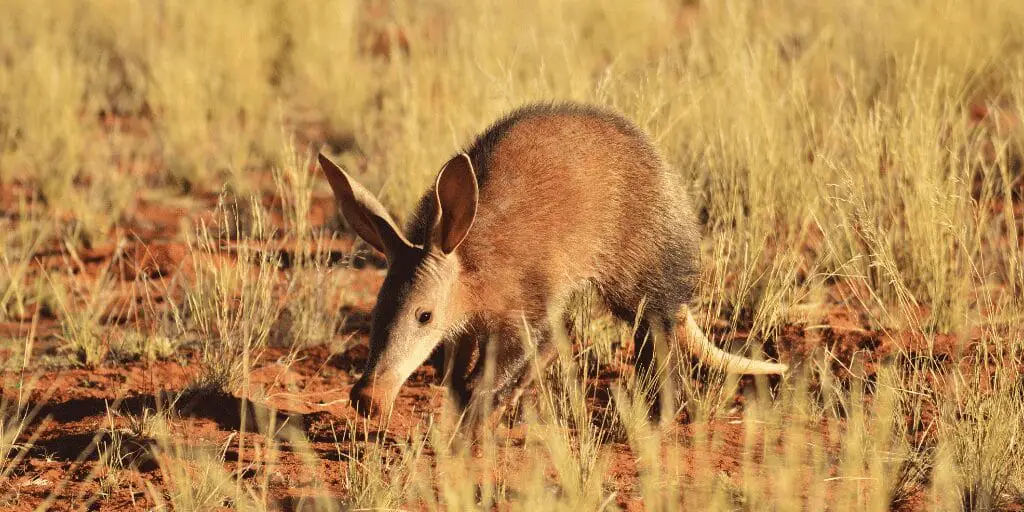
Inhabiting various African ecosystems, aardvarks, often seen as solitary creatures, sport distinctive elongated snouts adept at digging through termite mounds and ant colonies. These nocturnal mammals rely predominantly on termites and ants for sustenance, employing their powerful claws to excavate their meals.
Despite their somewhat bear-like appearance, they’re taxonomically unrelated to bears, belonging to the order Tubulidentata.
Arctic Fox:
Flourishing in the frigid climates of the Arctic tundra and alpine regions of North America and Eurasia, Arctic foxes boast thick, insulated fur coats. Their fur, changing from brown to a pristine white in winter, aids in both insulation and camouflage, ensuring their survival in the harsh, snow-laden landscapes.
Primarily carnivorous, their diet comprises small mammals like lemmings, birds, eggs, and even plant material when prey is scarce.
other animals with the letter A
- Alligator
- Antelope
- Anaconda
- Albatross
- Armadillo
- Anteater
- Ape
- Angelfish
Animal starting with word B
Bear:
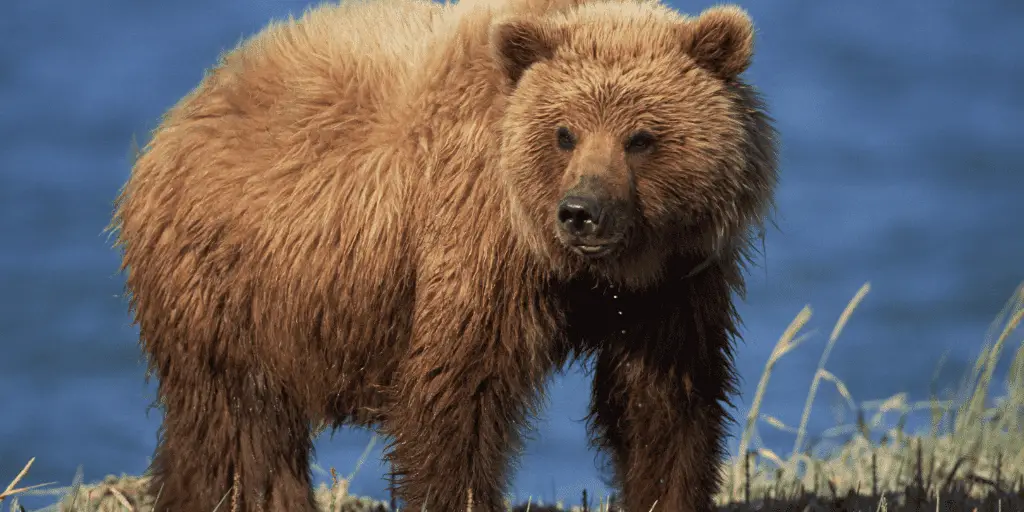
Bears come in various species, such as grizzly, polar, and black bears, found across diverse habitats in North America, Europe, Asia, and even parts of South America. These omnivores have a varied diet encompassing fruits, nuts, fish, insects, and occasionally small mammals. Their adaptability to different environments makes them one of Earth’s most recognizable and intriguing mammals.
Bald Eagle:
Predominantly inhabiting North America, bald eagles, known for their striking white head and tail against a dark brown body, are apex predators. They primarily feed on fish, scavenge for carrion, and occasionally hunt small mammals.
Here’s a list of other noteworthy ‘B’-named animals:
- Buffalo: Native to North America, Africa, and Asia, these massive bovids graze on grasses in open plains.
- Bison: Residing primarily in North America, these herbivorous mammals once roamed in vast herds across the prairies.
- Beaver: Found in North America, Ecurope, and Asia, beavers are renowned for their engineering skills in building dams and lodges, subsisting on tree bark and aquatic plants.
- Bat: Occupying diverse habitats worldwide, these nocturnal mammals consume insects, fruits, nectar, or, in some cases, blood.
- Baboon: Native to Africa and parts of Arabia, these Old World monkeys are omnivorous, feeding on a diet comprising fruits, seeds, insects, and occasionally small mammals.
- Butterfly: Distributed worldwide, butterflies typically feed on nectar from flowers and play a vital role in pollination.
Animals with the name beginning with c
Cheetah:
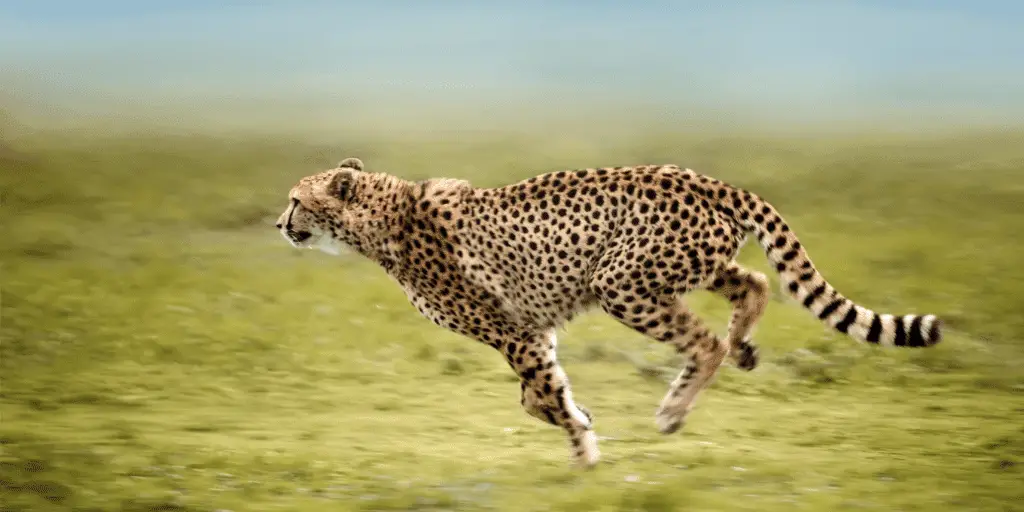
Inhabiting various regions across Africa and parts of Iran, the cheetah is famed for its incredible speed, making it the fastest land animal. They predominantly feed on small to medium-sized ungulates like gazelles and impalas, employing their remarkable agility and bursts of speed to hunt.
Crocodile:
Found in tropical regions across the Americas, Africa, Asia, and Australia, crocodiles are formidable apex predators. Their diet includes fish, amphibians, birds, and mammals that they ambush at the water’s edge, utilizing stealth and strength to catch their prey.
Here’s a list of other notable ‘C’-named animals:
- Chimpanzee: Inhabiting the forests of Africa, these highly intelligent primates exhibit complex social behaviors and primarily consume fruits, leaves, insects, and occasionally small animals.
- Coyote: Roaming across North and Central America, coyotes are adaptable carnivores known for their varied diet, including small mammals, fruits, and carrion.
- Condor: Found in South America and parts of North America, condors are large scavenging birds that primarily feed on carrion.
- Camel: Native to arid regions of Africa and Asia, camels are well-adapted to desert life, consuming thorny plants and requiring minimal water to survive.
- Cheetah: Recognized for its distinctive spotted coat, these swift predators are designed for high-speed pursuits to catch prey like antelope and hares.
- Cougar: Residing in the Americas, cougars are solitary carnivores that hunt deer, small mammals, and occasionally livestock.
Unique animal with D
Dolphins:
Distributed across oceans worldwide, dolphins are highly intelligent marine mammals known for their playful behavior and complex social structures. They primarily feed on fish and squid, using echolocation to navigate and locate prey.
Dingo:

Indigenous to Australia, dingoes are wild canids known for their adaptability and distinctive howls. They are carnivores, preying on small mammals, birds, and sometimes scavenging for food.
Here’s a list of other noteworthy ‘D’-named animals:
- Dromedary Camel: Found in arid regions of Africa and Asia, dromedary camels have a single hump and are well-adapted to desert conditions, feeding on vegetation and requiring minimal water.
- Dung Beetle: Inhabiting various ecosystems worldwide, dung beetles play a crucial role in ecosystems by feeding on feces and aiding in decomposition.
- Deer: Residing in diverse habitats globally, deer are herbivorous mammals, grazing on vegetation like grass, leaves, and shrubs.
- Dugong: Inhabiting shallow coastal waters in the Indo-Pacific, dugongs are marine mammals known as “sea cows,” primarily feeding on seagrass.
- Dhole: Native to Asia, dholes are social canids hunting cooperatively in packs, preying on small to medium-sized ungulates.
- Darter: Occurring in tropical regions, darters are aquatic birds known for their elongated necks, feeding on fish by impaling them with their sharp bills.
Animal beginning with E
Elephant:

Inhabiting savannas, forests, and grasslands of Africa and Asia, elephants are iconic herbivorous mammals known for their intelligence, social structures, and distinctive long trunks. They primarily feed on a variety of vegetation, including grasses, leaves, and fruits.
Eagle:
Found in diverse habitats across the globe, eagles are powerful birds of prey known for their keen eyesight and strong talons. They are carnivorous, hunting various prey such as small mammals, birds, and fish.
Here’s a list of other noteworthy ‘E’-named animals:
- Elk: Residing in forests and grasslands of North America and Eurasia, elks are large herbivores, primarily feeding on grasses, leaves, and shrubs.
- Echidna: Native to Australia and New Guinea, echidnas are spiny anteaters known for their unique egg-laying reproduction. They feed primarily on ants and termites.
- Emu: Indigenous to Australia, emus are flightless birds consuming a varied diet consisting of plants, insects, and small vertebrates.
- Ermine: Found in northern regions, ermines, also known as stoats or short-tailed weasels, are carnivorous mammals preying on small rodents and birds.
- Eel: Inhabiting freshwater and marine environments worldwide, eels are elongated fish that feed on smaller fish, crustaceans, and invertebrates.
- Eland: Native to the African savannas, elands are large antelopes grazing on grasses and leaves.
Animals that begin with the letter F
Falcon:
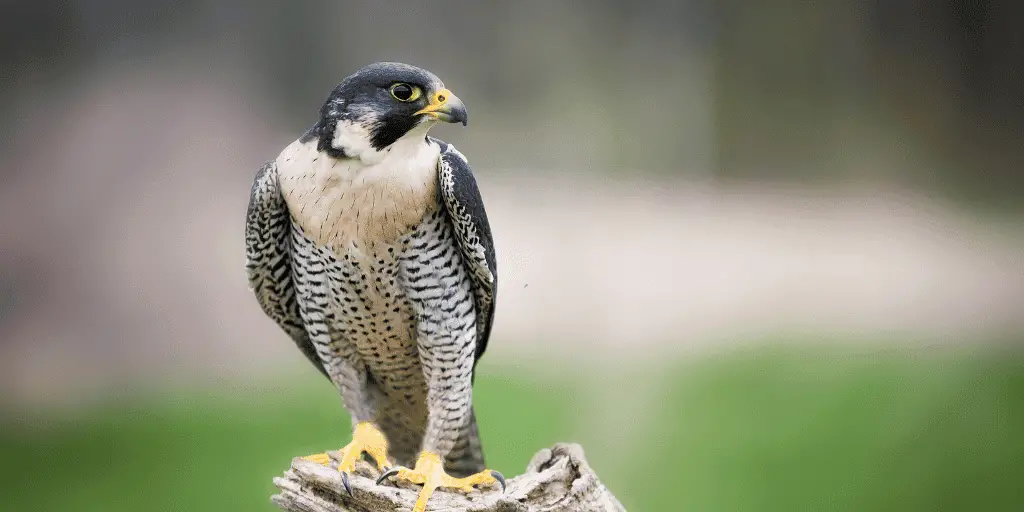
Falcons are birds of prey found across diverse landscapes globally. Known for their exceptional speed and aerial hunting skills, they primarily feed on smaller birds and occasionally insects. They’re commonly found in open spaces like grasslands, deserts, and mountainous regions.
Flamingo:
These iconic birds inhabit various wetland areas, including shallow lakes and lagoons in Africa, Asia, the Americas, and Europe. Known for their vibrant pink plumage and long legs, flamingos feed on algae, small invertebrates, and crustaceans found in their watery habitats.
Here’s a list of other notable ‘F’-named animals:
- Fox: Found in diverse habitats worldwide, foxes are adaptable omnivores known for their cunning nature. They consume small mammals, birds, insects, fruits, and even scavenged food.
- Frog: Amphibians are found globally in diverse habitats, frogs have permeable skin and lay eggs in water. They primarily consume insects and smaller invertebrates.
- Fennec Fox: Native to the Sahara Desert, fennec foxes are nocturnal creatures feeding on insects, small rodents, and plants.
- Fossa: Indigenous to Madagascar, fossas are carnivorous mammals resembling a mix of a cat and a mongoose. They prey on lemurs and other small animals.
Animals bearing the letter G
Giraffe:

Found in savannas and grasslands of Africa, giraffes are iconic herbivores recognized for their long necks and distinctive coat patterns. They primarily feed on leaves and buds from tall trees, using their height advantageously to reach higher branches.
Gorilla:
Indigenous to the forests of central Africa, gorillas are the largest primates known for their impressive strength and gentle nature. They are primarily herbivorous, consuming vegetation such as leaves, stems, fruits, and occasionally insects.
Here’s a list of other noteworthy ‘G’-named animals:
- Gazelle: Found in African and Asian grasslands, gazelles are agile antelopes grazing on grasses and shrubs.
- Grizzly Bear: Inhabiting North America, grizzly bears are omnivores consuming berries, nuts, fish, and occasionally small mammals.
- Gila Monster: Native to the southwestern United States and northwestern Mexico, Gila monsters are venomous lizards feeding primarily on small mammals, birds, and eggs.
- Gecko: Distributed worldwide, geckos are small lizards known for their adhesive toe pads and feed on insects and other small invertebrates.
- Gibbon: Native to Southeast Asia, gibbons are small apes that primarily consume fruits, leaves, and insects.
- Grouse: Found in various habitats across North America, Europe, and Asia, grouses are game birds feeding on seeds, buds, and insects.
- Guppy: Originating from South America, guppies are small, colorful freshwater fish feeding on algae and small invertebrates.
Animals with the letter H in their names
Hippopotamus:
Native to sub-Saharan Africa, hippos are semi-aquatic mammals primarily found in rivers and lakes. Despite their massive size, they’re herbivores, feeding on grasses and aquatic plants, often venturing out of water at night to graze.
Here’s a list of other notable ‘H’-named animals:
- Hedgehog: Found in Europe, Asia, and Africa, hedgehogs are small spiny mammals that primarily consume insects, small vertebrates, and plants.
- Hyena: Native to Africa and parts of Asia, hyenas are carnivorous mammals with powerful jaws, feeding on a wide range of prey, including scavenged carrion.
- Humpback Whale: Roaming oceans globally, humpback whales are massive marine mammals feeding on krill and small fish, known for their acrobatic displays during the breeding season.
- Hare: Found in various habitats across North America, Europe, and Asia, hares are herbivorous mammals that primarily graze on grasses and plants.
Animal species containing the letter I
Iguana:
Found in tropical regions of Central and South America, as well as some Caribbean islands, iguanas are herbivorous lizards. They feed primarily on leaves, fruits, flowers, and occasionally insects.
Impala:
Native to eastern and southern Africa, impalas are medium-sized antelopes known for their leaping ability and distinctive markings. They are herbivores grazing on grasses and herbs.
Here’s a list of other noteworthy ‘I’-named animals:
- Indri: Indigenous to Madagascar, the indri is the largest living lemur species, consuming mostly leaves, fruits, and flowers.
- Imposter Angelfish: This species is found in the Indo-Pacific region and feeds on small invertebrates and algae.
- Indian Elephant: Native to India, these elephants are herbivorous, feeding on a variety of vegetation such as grasses, leaves, and fruits.
- Iriomote Cat: Endemic to Japan’s Iriomote Island, these cats are carnivorous, preying on small mammals, birds, and reptiles.
- Isopod: Isopods are crustaceans found in various aquatic and terrestrial habitats, feeding on decaying matter, algae, and small organisms.
Animals that begin with the letter J
Jaguar:

Native to the Americas, jaguars are powerful and agile big cats found in rainforests, swamps, and grasslands. They are carnivorous predators, feeding on a variety of prey such as deer, capybaras, and sometimes even caimans.
Jackrabbit:
Residing in North and Central America, jackrabbits are hares known for their long ears and powerful hind legs, enabling swift movement to escape predators. They primarily feed on grasses and shrubs.
Here’s a list of other noteworthy ‘J’-named animals:
- Jellyfish: Found in oceans worldwide, jellyfish are marine invertebrates that feed on plankton, small fish, and other jellyfish.
- Jabiru Stork: Native to Central and South America, jabiru storks are large wading birds feeding on fish, amphibians, reptiles, and insects.
- Javan Rhino: Found in Java, Indonesia, these rhinos are herbivores, primarily feeding on vegetation such as leaves, fruits, and plants.
- Japanese Macaque: Residing in Japan, these macaques are omnivores consuming fruits, seeds, insects, and occasionally small animals.
Animals starting with K
Kangaroo:
Found predominantly in Australia, kangaroos are marsupials known for their powerful hind legs adapted for hopping. They primarily feed on grasses, herbs, and shrubs.
Koala:
Indigenous to Australia, koalas are arboreal marsupials that primarily inhabit eucalyptus forests. They feed almost exclusively on eucalyptus leaves.
Here’s a list of other noteworthy ‘K’-named animals:
- Komodo Dragon: Native to Indonesia’s Komodo Island, Komodo dragons are the world’s largest lizards. They are carnivorous reptiles preying on deer, pigs, and occasionally smaller Komodo dragons.
- Kookaburra: Found in Australia and New Guinea, kookaburras are terrestrial tree kingfishers known for their distinctive laughing call. They feed on small mammals, insects, and reptiles.
- Kudu: Indigenous to eastern and southern Africa, kudus are large antelopes inhabiting woodlands and savannas. They feed on leaves, shoots, fruits, and occasionally grasses.
Animals with the name beginning with L
Lion:

Lions are iconic carnivorous mammals found in Africa and a small population in India. They live in social groups called pride and primarily feed on large ungulates like zebras, wildebeests, and buffalo.
Leopard:
Leopards are solitary and agile big cats in various African and Asian habitats. They are opportunistic predators, feeding on a wide range of prey, including antelopes, monkeys, and smaller mammals.
Here’s a list of other notable ‘L’-named animals:
- Lynx: Lynxes are medium-sized wildcats found in North America, Europe, and Asia. They primarily feed on small mammals like rabbits, rodents, and birds.
- Lemur: Lemurs are primates endemic to Madagascar. They have diverse diets that include fruits, leaves, insects, and even small vertebrates.
- Loris: Lorises are small, nocturnal primates found in Southeast Asia. They feed on insects, fruits, and tree sap.
- Limpet: Limpets are marine mollusks found on rocks in coastal areas, feeding on algae and other microscopic organisms.
- Lizard: Lizards are reptiles found in diverse habitats globally, consuming insects, small vertebrates, and occasionally plants.
Unique animal with M
Manatee:
Found in warm, shallow waters of the Caribbean Sea, Gulf of Mexico, and rivers in the Amazon basin, manatees are large, slow-moving aquatic mammals. They primarily feed on aquatic plants such as seagrasses and freshwater vegetation.
Mongoose:
Indigenous to Asia, Africa, and parts of Europe, mongooses are small carnivorous mammals known for their agility and ability to combat venomous snakes. Their diet consists mainly of insects, small rodents, birds, and eggs.
Here’s a list of other noteworthy ‘M’-named animals:
- Macaw: Vibrantly colored parrots native to Central and South America, feeding on fruits, seeds, nuts, and occasionally flowers.
- Moose: Found in North America, Europe, and Asia, moose are large herbivores feeding on aquatic plants, shrubs, and twigs.
- Marmot: Marmots are ground-dwelling rodents inhabiting mountainous regions, feeding on grasses, seeds, and herbs.
- Mole: Small mammals found in various habitats, feeding primarily on earthworms, insects, and larvae.
- Muskox: Inhabiting Arctic regions, muskoxen are herbivores grazing on grasses, mosses, and lichens.
Animal beginning with N
Nile Crocodile:
Indigenous to freshwater habitats in sub-Saharan Africa, Nile crocodiles are apex predators. They consume a varied diet consisting of fish, amphibians, reptiles, birds, and mammals.
Here’s a list of other noteworthy ‘N’-named animals:
- Numbat: Found in western Australia, numbat is a small marsupial that primarily feeds on termites.
- Nudibranch: These colorful marine gastropod mollusks are found in oceans worldwide, feeding on sponges, anemones, and other invertebrates.
- Newt: Newts are amphibians inhabiting ponds and streams across Europe, Asia, and North America, feeding on insects, larvae, and small aquatic creatures.
- Narwhal: Narwhals inhabit Arctic waters and are known for their long spiral tusks. They primarily feed on fish and cephalopods.
- Naked Mole-Rat: Found in East Africa, naked mole-rats are subterranean rodents that primarily feed on underground plant roots and tubers.
Animals containing the letter O
Orangutan:
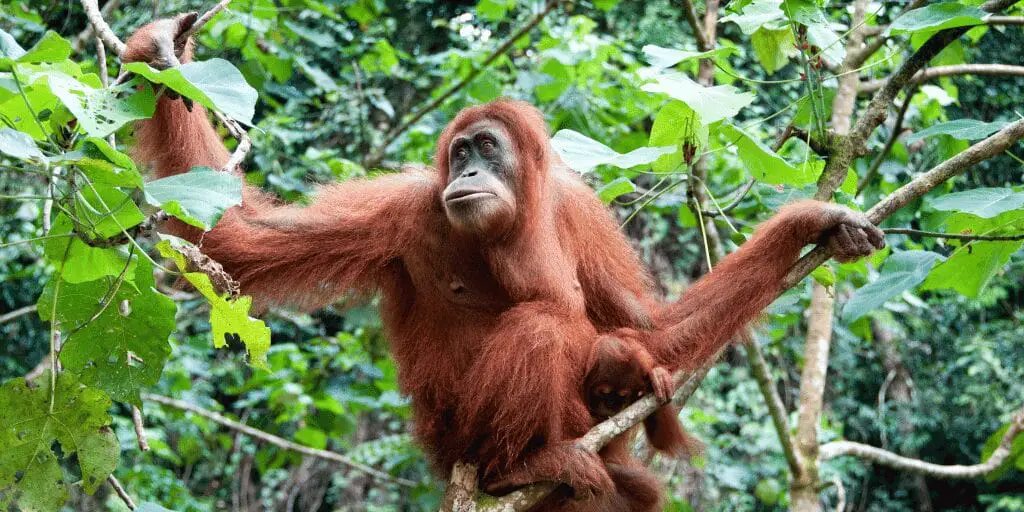
Orangutans are large arboreal great apes native to the rainforests of Borneo and Sumatra. They primarily consume fruits, leaves, bark, and insects. These critically endangered primates are known for their intelligence and distinct reddish-brown fur.
Ocelot:
Ocelots are medium-sized wild cats found in South America, Central America, and southern parts of North America. They are carnivorous predators, feeding on small mammals, birds, reptiles, and fish.
Here’s a list of other notable ‘O’-named animals:
- Oryx: Oryxes are large antelopes inhabiting arid regions of Africa and the Arabian Peninsula. They mainly feed on grasses, leaves, and fruits.
- Otter: Otters are semi-aquatic mammals found in freshwater and marine habitats globally. They primarily feed on fish, crustaceans, and mollusks.
- Octopus: Octopuses are intelligent marine invertebrates found in oceans worldwide. They are carnivorous and feed on crabs, shellfish, and small fish.
- Okapi: Okapis are giraffe relatives found in the dense tropical rainforests of the Democratic Republic of Congo. They feed on leaves, buds, fruits, and fungi.
- Orca: Orcas, also known as killer whales, are highly intelligent marine mammals found in oceans worldwide. They primarily feed on fish, seals, and occasionally other marine mammals.
Animals beginning with the letter P
Panda:
Giant pandas are native to China and known for their distinctive black and white fur. Found in mountainous bamboo forests, they primarily feed on bamboo shoots, stems, and leaves.
Here’s a list of other noteworthy ‘P’-named animals:
- Polar Bear: Polar bears inhabit the Arctic region and are well-adapted to the cold. They primarily feed on seals and marine mammals.
- Panther: Panthers are large cats known for their stealth and agility, found in various habitats across the Americas, Asia, and Africa. They primarily prey on deer, wild boar, and smaller mammals.
- Porcupine: Porcupines are rodents with sharp spines or quills covering their bodies. They are found in diverse habitats and feed on bark, leaves, and fruit.
- Pronghorn: Pronghorns are North American antelopes known for their speed and endurance. They mainly feed on grasses, shrubs, and forbs.
- Puma: Pumas, also known as mountain lions or cougars, inhabit various regions in the Americas. They primarily prey on deer and smaller mammals.
- Pangolin: Pangolins are scaly anteaters found in Asia and Africa, feeding on ants, termites, and larvae.
Beings with the letter Q in their names
Quokka:
Quokkas are small marsupials primarily found in Australia, predominantly on Rottnest Island. Known for their friendly and smiling appearance, they primarily feed on grasses, leaves, and succulent plants.
Here’s a list of other noteworthy ‘Q’-named beings:
- Quahog: Quahogs are a species of edible clam found along the Atlantic coast of North America, feeding on plankton filtered from seawater.
- Quokka: Small marsupials native to Australia known for their friendly appearance and herbivorous diet.
- Quoll: Quolls are carnivorous marsupials found in Australia and New Guinea, primarily feeding on insects, small mammals, and reptiles.
- Quarter Horse: A breed of horse originating from the United States, primarily used for racing and ranch work, feeding on hay, grains, and grass.
Animal species that contain the letter R
Rhino:
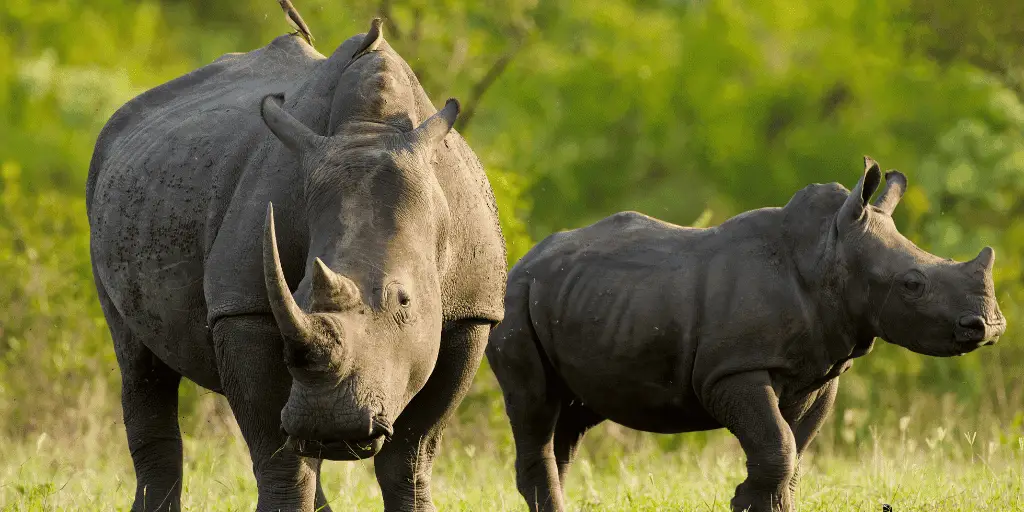
Rhinoceroses are large herbivorous mammals found in Africa and Asia. They have distinct horns and thick skin and primarily feed on grasses, leaves, branches, and fruits.
Raccoon:
Raccoons are medium-sized mammals native to North America. They are omnivorous and opportunistic feeders, consuming fruits, nuts, insects, small animals, and human food scraps.
Here’s a list of other noteworthy ‘R’-named animals:
- Red Panda: Red pandas are arboreal mammals native to the Himalayas and southwestern China. They primarily feed on bamboo, fruits, and small vertebrates.
- Rattlesnake: Rattlesnakes are venomous snakes found in the Americas. They feed on small mammals, birds, and sometimes other reptiles.
- Rabbit: Rabbits are small mammals found worldwide. They are herbivores, consuming grasses, herbs, and vegetables.
- Ring-tailed Lemur: Ring-tailed lemurs are primates native to Madagascar. They primarily feed on fruits, leaves, flowers, and occasionally insects.
- Reindeer: Reindeer, also known as caribou in North America, are large herbivores inhabiting Arctic and sub-Arctic regions. They primarily feed on lichens, grasses, and shrubs.
- Red Fox: Red foxes are widespread carnivorous mammals found in various habitats across the Northern Hemisphere. They feed on small mammals, birds, fruits, and insects.
Animal entities with the letter S
Sloth:
Sloths are arboreal mammals found in Central and South America. They primarily reside in tropical rainforests, spending most of their time hanging upside-down in trees. Sloths have a herbivorous diet, mainly consisting of leaves, buds, and fruits.
Shark:
Sharks are diverse marine fish found in oceans across the globe. They inhabit various aquatic environments and have carnivorous feeding habits, consuming fish, seals, and sometimes larger marine mammals.
Here’s a list of other noteworthy ‘S’-named animals:
- Snow Leopard: Snow leopards inhabit mountainous regions of Central and South Asia. They feed on ibex, blue sheep, and other small mammals.
- Sea Turtle: Sea turtles are marine reptiles found in oceans worldwide. They primarily feed on seagrasses, algae, jellyfish, and occasionally small fish.
- Siberian Tiger: Siberian tigers, also known as Amur tigers, inhabit the forests of eastern Russia. They prey on deer, wild boar, and occasionally smaller predators.
- Squid: Squids are cephalopods found in marine environments globally. They are carnivorous, preying on fish, crustaceans, and other mollusks.
- Serval: Servals are wild cats native to Africa. They primarily feed on rodents, birds, and insects.
- Starfish: Starfish, also known as sea stars, are marine invertebrates found in various ocean depths. They primarily feed on mollusks and other small marine animals.
- Scorpion: Scorpions are arachnids found in deserts and other arid environments worldwide. They are carnivorous, feeding on insects, spiders, and small vertebrates.
Animals starting with T
Tiger:

Tigers are large carnivorous cats found primarily in Asia, inhabiting various ecosystems from dense forests to grasslands. They primarily prey on ungulates such as deer and wild boar, but their diet can also include smaller mammals and occasionally birds or fish.
Here’s a list of other noteworthy ‘T’-named animals:
- Tapir: Tapirs are large, herbivorous mammals found in Central and South America, as well as Southeast Asia. They primarily feed on leaves, fruits, and aquatic plants.
- Tarantula: Tarantulas are large, hairy spiders found in various habitats worldwide. They are carnivorous, preying on insects, smaller spiders, and sometimes small vertebrates.
- Tortoise: Tortoises are terrestrial reptiles found in diverse habitats. They are herbivores, feeding on grasses, leaves, and flowers.
- Tamarin: Tamarins are small primates native to Central and South America. They primarily feed on fruits, insects, and tree sap.
- Trout: Trout are freshwater fish found in rivers and streams across the Northern Hemisphere. They primarily feed on insects, small fish, and crustaceans.
- Tardigrade: Tardigrades, also known as water bears, are microscopic invertebrates found in various environments worldwide. They feed on plant cells, algae, and small invertebrates.
- Thresher Shark: Thresher sharks are large marine predators found in temperate and tropical oceans. They primarily feed on small fish and squid.
- Tarsier: Tarsiers are small primates inhabiting forests in Southeast Asia. They primarily feed on insects, small vertebrates, and occasionally fruits.
Animals with the name beginning with U
Uakari:
Uakaris are monkeys native to the Amazon rainforests in South America. They are recognized by their bald faces and red facial skin. Their diet mainly comprises fruits, seeds, and flowers.
Here’s a list of other noteworthy ‘U’-named animals:
- Urial: Urials are wild sheep native to Central Asia. They inhabit mountainous regions and primarily feed on grasses, leaves, and shrubs.
- Umbrella Thorn Acacia: A type of tree found in Africa, known for its umbrella-like canopy and serving as a food source for various animals.
- Unicornfish: Unicornfish are tropical marine fish found in coral reefs. They primarily feed on algae and small invertebrates.
- Umbonia Spinosa: Umbonia spinosa is a species of thorn bug found in South America. They feed on plant sap using their piercing mouthparts.
- Urchin: Urchins are marine creatures found worldwide, feeding on algae and seaweed.
- Uinta Ground Squirrel: Uinta ground squirrels are found in North America and feed on seeds, plants, and insects.
Unique animal with V
Vicuña:
Vicuñas are wild camelids found in the high alpine regions of South America, primarily in the Andes. They graze on grasses and shrubs, feeding on tough, high-altitude vegetation.
Here’s a list of other noteworthy ‘V’-named animals:
- Vervet Monkey: Vervet monkeys are found in various habitats across Africa. They consume a varied diet, including fruits, leaves, seeds, and insects.
- Vicuña: Wild camelids native to South America, known for their fine wool and high-altitude habitat.
- Velvet Worm: Velvet worms are small invertebrates found in tropical regions. They feed on small insects and other invertebrates.
- Viscacha: Viscachas are rodents native to South America, living in arid habitats and feeding on grasses and herbs.
- Vole: Voles are small rodents found in various habitats globally. They primarily feed on plants, seeds, and roots.
Animal beginning with W
Wolf:
Wolves are carnivorous mammals found in various habitats, including forests, plains, and tundra across North America, Europe, and Asia. They are social animals living in packs, preying primarily on ungulates such as deer, elk, and moose.
Here’s a list of other noteworthy ‘W’-named animals:
- Walrus: Walruses are marine mammals found in Arctic seas. They primarily feed on mollusks, such as clams and mussels.
- Warthog: Warthogs are wild pigs native to Africa, inhabiting savannas and grasslands. They feed on grass, roots, and occasionally insects.
- Weasel: Weasels are small carnivorous mammals found in various habitats globally. They primarily feed on small mammals and birds.
- Wallaby: Wallabies are marsupials native to Australia and nearby islands. They primarily feed on grasses and plants.
- Wildcat: Wildcats are small cats found in Europe, Africa, and Asia. They primarily feed on small mammals, birds, and reptiles.
- Water Buffalo: Water buffaloes are large bovines found in Asia and parts of Europe and Africa. They primarily feed on grasses and aquatic plants.
Animals containing the letter X
Xerus:
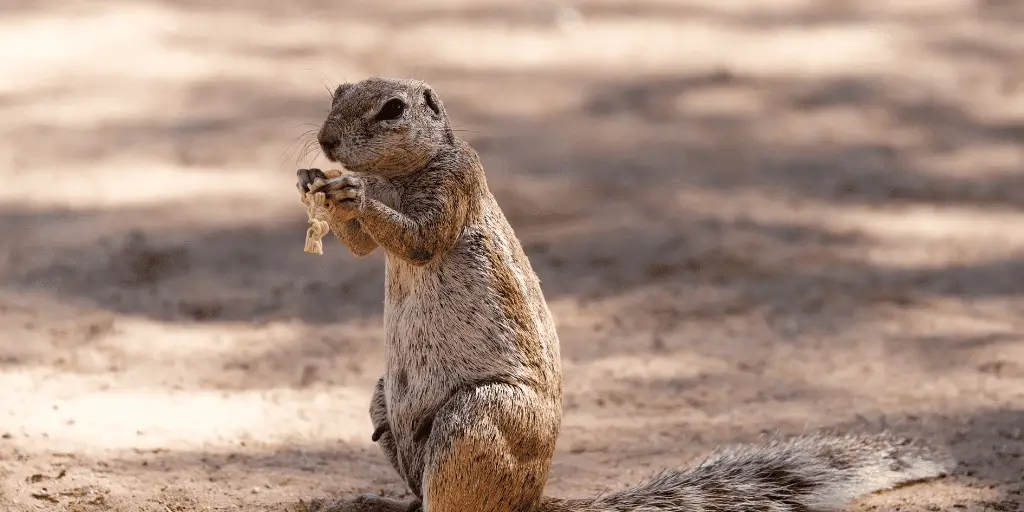
Xerus, commonly known as African ground squirrels, inhabit grasslands and savannas in parts of Africa. These diurnal rodents primarily feed on seeds, insects, and plant matter.
Here’s a list of other notable ‘X’-named animals:
- Xantusia: Xantusia, commonly known as night lizards, are found in the southwestern United States and Mexico. They feed on small insects and are primarily nocturnal.
- Xenopus: Xenopus, also called African clawed frogs, are aquatic frogs found in sub-Saharan Africa. They primarily feed on small aquatic invertebrates.
- Xiphias: Xiphias, known as swordfish, are large predatory fish found in oceanic waters globally. They primarily feed on smaller fish and squid.
- Xerus: African ground squirrels found in grasslands and savannas, feeding on seeds and insects.
- Xantusia: Nocturnal lizards found in the southwestern United States and Mexico, feeding on small insects.
Animals whose names begin with the letter Y
Yak:
Yaks are robust, long-haired bovines found in the Himalayan region and Central Asia. These herbivores primarily graze on grasses and shrubs in high-altitude mountainous areas.
Here’s a list of other noteworthy ‘Y’-named animals:
- Yabby: Yabbies are freshwater crustaceans found in Australia. They feed on detritus, plants, and small aquatic creatures.
- Yellow Baboon: Yellow baboons are primates native to Africa, living in savannas and woodland areas. They are omnivores, feeding on fruits, insects, and small mammals.
- Yellow-Eyed Penguin: Yellow-eyed penguins are found in New Zealand and neighboring islands. They primarily feed on fish and squid inhabiting coastal areas.
- Yak: Robust bovines native to the Himalayas and Central Asia, primarily feeding on grasses and shrubs in mountainous areas.
- Yellowtail: Fish found in temperate and tropical waters, feeding on smaller fish, squid, and plankton.
- Yabby: Freshwater crustaceans from Australia, feeding on detritus, plants, and small aquatic creatures.
- Yellow Baboon: Primates living in African savannas have an omnivorous diet, including fruits, insects, and small mammals.
Beings with the letter Z in their names
Zebra:
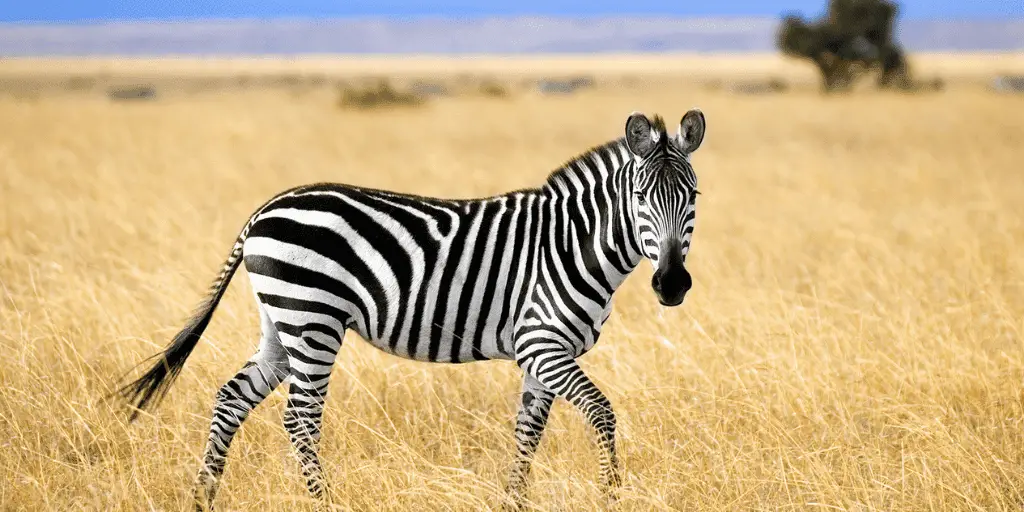
Zebras are iconic African equids known for their black and white striped coats. Found primarily in savannas and grasslands, they are herbivores feeding on grass, leaves, and occasionally shrubs.
Zebu:
Zebus are humped cattle, domesticated in South Asia and parts of Africa. They graze on grass and foliage, often found in tropical regions.
Here’s a list of other notable ‘Z’-named beings:
- Zokor: Zokors are burrowing rodents found in East Asia. They primarily feed on roots, tubers, and plants.
- Zebra: Iconic African equids with distinctive black and white striped coats, primarily found in savannas and grasslands, feeding on grass and leaves.
- Zebu: Humped cattle domesticated in South Asia and parts of Africa, grazing on grass and foliage in tropical regions.
- Zorilla: Small carnivores residing in Africa, known for feeding on insects, small mammals, and eggs.
Conclusion
Throughout this comprehensive exploration of animals spanning A to Z, we’ve encountered a diverse tapestry of beings thriving across varied habitats globally. From the majestic Tiger stalking the forests to the humble Zebra grazing in the savannas, each creature contributes uniquely to its ecosystem.
We’ve observed how the intricate adaptations of the Arctic-dwelling Polar Bear contrast with the vibrant colors of the Rainforest’s Scarlet Macaw.
From the Crocodile’s powerful jaws to the Eagle’s graceful flight, these animals exemplify nature’s beauty and diversity. They range from the diminutive Honey Bee to the towering Giraffe, showcasing an incredible spectrum of sizes, behaviors, and feeding habits.
Whether it’s the industrious Ant tirelessly laboring or the playful Dolphin navigating the oceans, these animals hold key roles in balancing our planet’s ecosystems.
From the carnivorous prowess of the Lion to the docile grazing habits of the Yak, these beings underscore the importance of biodiversity and conservation efforts.
Each animal, from the elusive Snow Leopard to the familiar domesticated Dog, plays an indispensable role in maintaining the delicate equilibrium of our planet’s ecosystems.
This journey from A to Z underscores the richness of our natural world and the importance of preserving it for generations to come.

